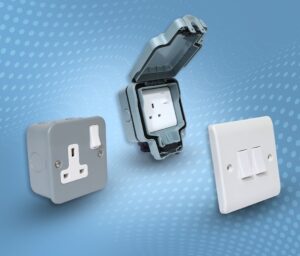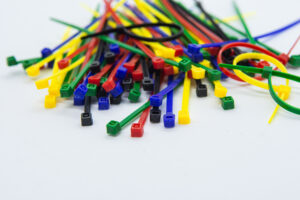What Is a Water Pump?
At its core, a water pump is a mechanical device used to move water from one location to another. Pumps work by creating pressure differences to push the water through pipes or hoses, which can be directed to a specific location like a garden, pool, or plumbing system. Depending on the application, water pumps can be powered by electricity, gas, or solar energy.
There are several types of water pumps, each suited to different tasks based on how much water needs to be moved, the source of the water, and how the water should be directed.
How Do Water Pumps Work?
Water pumps work by using mechanical force to move water. Most pumps rely on a rotating mechanism to push or pull water. The basic operation typically involves:
- Inlet Valve: This is where water enters the pump. The water is usually pulled into the pump by suction or a moving diaphragm.
- Impeller or Piston: This component moves the water. In centrifugal pumps, a spinning impeller pushes the water outward. In piston-based pumps, a piston moves up and down to displace water.
- Outlet Valve: After the water is moved, it exits through the outlet valve, traveling to the desired location.
In both centrifugal and positive displacement pumps, the key function is to create pressure that forces water through a system of pipes or hoses.
Types of Water Pumps
There are several types of water pumps, each designed for specific tasks. Let’s look at the most common ones:
1. Centrifugal Pumps
How They Work: These pumps use centrifugal force to move water. When water enters the pump, it is accelerated by a rotating impeller and pushed outward. This creates pressure that pushes the water through the pump and into the desired location.
Where to Use Them: Centrifugal pumps are commonly used in home irrigation systems, pool filtration systems, and industrial water transfer. They are best for situations where water needs to be moved over a relatively short distance and with low to medium pressure.
2. Submersible Pumps
How They Work: As the name suggests, these pumps are designed to be submerged in water. They have a sealed motor and impeller, which makes them ideal for pumping water from below the surface.
Where to Use Them: Submersible pumps are often used for pumping water from wells, draining flooded areas, and pumping water from deep sources. They are perfect for handling both clean and dirty water and are often used in residential and agricultural settings.
3. Jet Pumps
How They Work: Jet pumps use a combination of air and water pressure to move water. They create a vacuum that pulls water up into the pump and then forces it through the discharge pipe.
Where to Use Them: Jet pumps are commonly used for shallow well applications (typically up to 25 feet deep), pumping water for irrigation, and in residential water supply systems. They are not ideal for deep water sources, as their suction capabilities are limited.
4. Positive Displacement Pumps
How They Work: Unlike centrifugal pumps, positive displacement pumps move water by trapping a fixed amount of liquid and forcing it into the discharge pipe. These pumps typically have pistons or diaphragms that move up and down to create a steady flow of water.
Where to Use Them: These pumps are ideal for high-pressure applications or when you need to move thick liquids, such as slurries. Positive displacement pumps are used in industrial processes, chemical mixing, and water treatment plants.
5. Diaphragm Pumps
How They Work: Diaphragm pumps use a flexible diaphragm that moves back and forth, drawing water into the pump and then pushing it out through the outlet valve.
Where to Use Them: These pumps are commonly used in chemical dosing, pumping viscous liquids, and water treatment applications. They are especially useful when pumping water with debris or slurry.
Common Uses of Water Pumps
Water pumps are versatile tools that have many uses. Here are some of the most common ways they’re used:
1. Home and Garden Irrigation
Water pumps are widely used in irrigation systems to move water from a source (like a well or reservoir) to your garden or lawn. They ensure consistent water pressure for watering plants, lawns, or agricultural fields.
Type of Pump: Centrifugal pumps, Submersible pumps
2. Flood Control and Drainage
In areas prone to flooding or heavy rains, water pumps are essential for draining excess water and preventing property damage. They can be used to pump water from basements, fields, or streets.
Type of Pump: Submersible pumps, Diaphragm pumps
3. Pumping Water from Wells
Water pumps are often used to bring water up from deep wells. In residential settings, they ensure access to clean water for drinking, cleaning, and other household needs.
Type of Pump: Jet pumps, Submersible pumps
4. Swimming Pool Filtration
Water pumps are a key component of pool filtration systems. They circulate the water, pushing it through filters to remove debris, keeping the water clean and clear.
Type of Pump: Centrifugal pumps
5. Industrial and Commercial Applications
Water pumps are used in many industrial processes, including cooling systems, water treatment plants, and mining operations. They help manage large amounts of water, whether for processing, cleaning, or cooling purposes.
Type of Pump: Positive displacement pumps, Diaphragm pumps, Centrifugal pumps
6. Pumping Water for Agriculture
Farmers use water pumps to move water from irrigation channels to fields, ensuring crops receive adequate water. Pumps are also used in livestock operations for water supply and waste management.
Type of Pump: Centrifugal pumps, Submersible pumps
7. Emergency Use
During emergencies, such as floods or broken pipes, water pumps are used to quickly remove standing water and prevent damage to buildings, roads, and equipment.
Type of Pump: Submersible pumps, Jet pumps
Conclusion
Water pumps are indispensable tools used in a wide range of applications, from simple gardening tasks to complex industrial processes. By understanding the different types of pumps and their uses, you can choose the right one for your needs, ensuring that you’re able to move water efficiently and safely. Whether you’re dealing with irrigation, flood control, or industrial water management, there’s a water pump designed to meet the challenge.
Make sure to consider the specific requirements of your project—such as the depth of water, the volume, and the pressure needed—before selecting a pump. With the right pump in hand, you’ll be able to manage water flow effectively and keep your operations running smoothly.





